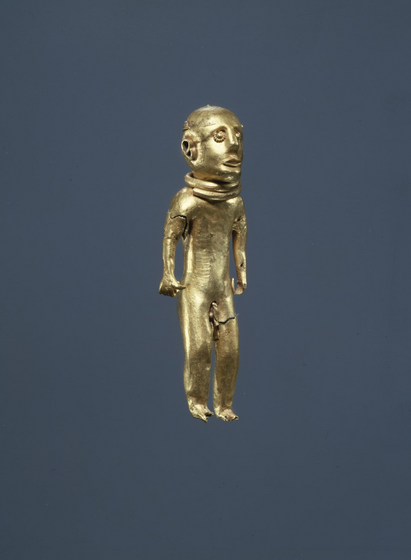Germanic Statuette of Gods
Small bronze figures of people, almost exclusively men, appears during the 3rd-4th century AD. They are found singly on settlements or near lakes and bogs, but often we do not know the detailed finding circumstances. Some of the little metal men ended up as scrap metal in hoards, apparently they were not used as burial gifts to the dead. The figures are shaped differently, some are plastic and well executed, while others lack hands and feet or maybe just consists of a head on a long pin. Most of the men are naked or just wearing a belt around his waist. Some wear jewelry in the form of arm or neck rings. The face is often shaped with a cap shaped hair parted in the middle and hair combed down along the sides. Many have a strong mustache and a pointing beard. We do not know who the characters are representing - perhaps gods. The use of God figures in the Nordic countries can be an inspiration from the Roman Empire, where the gods were often reproduced in the form of small statuettes of bronze, for example, the so-called facilitation forms that protected the family's property and was grown by home fires.


